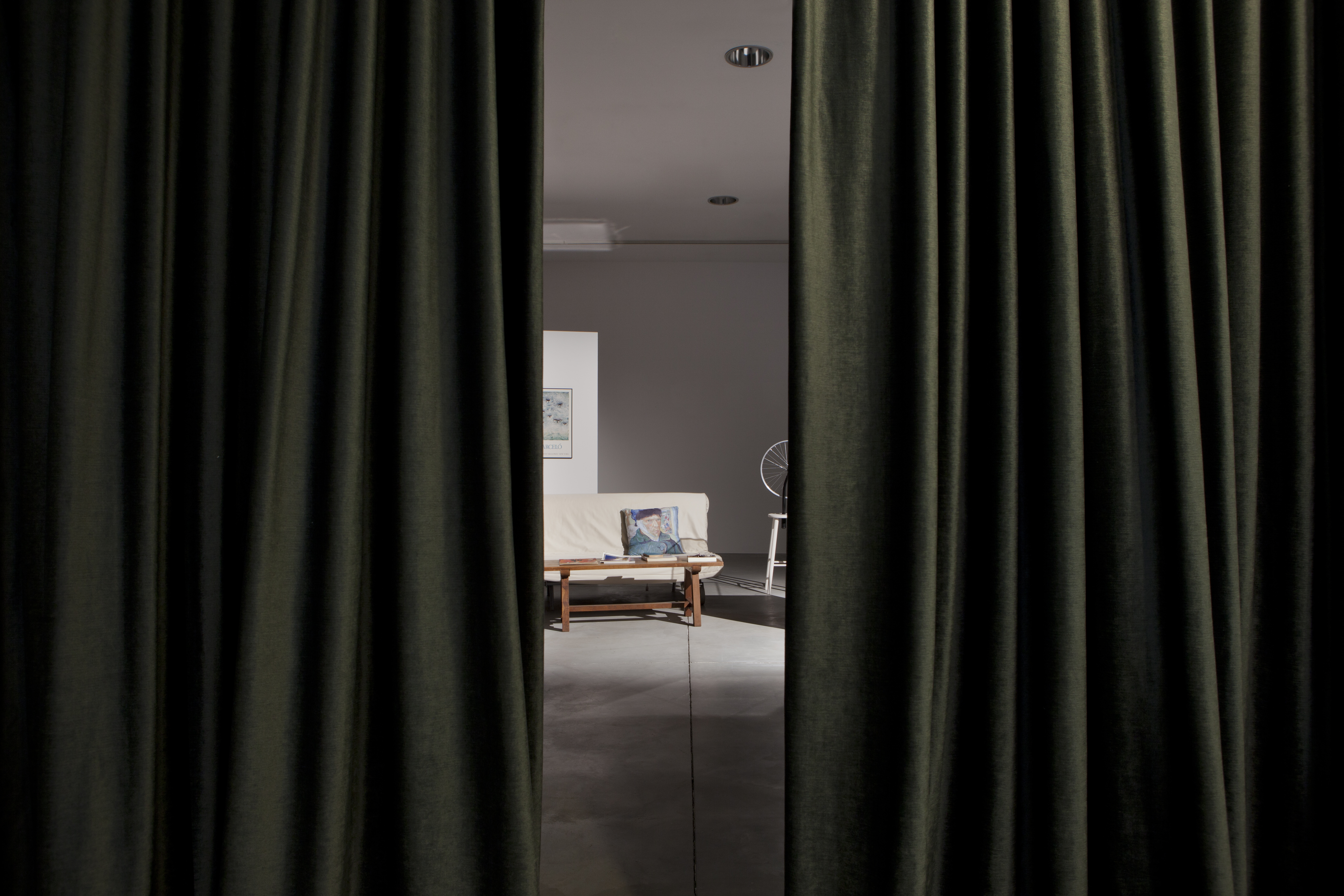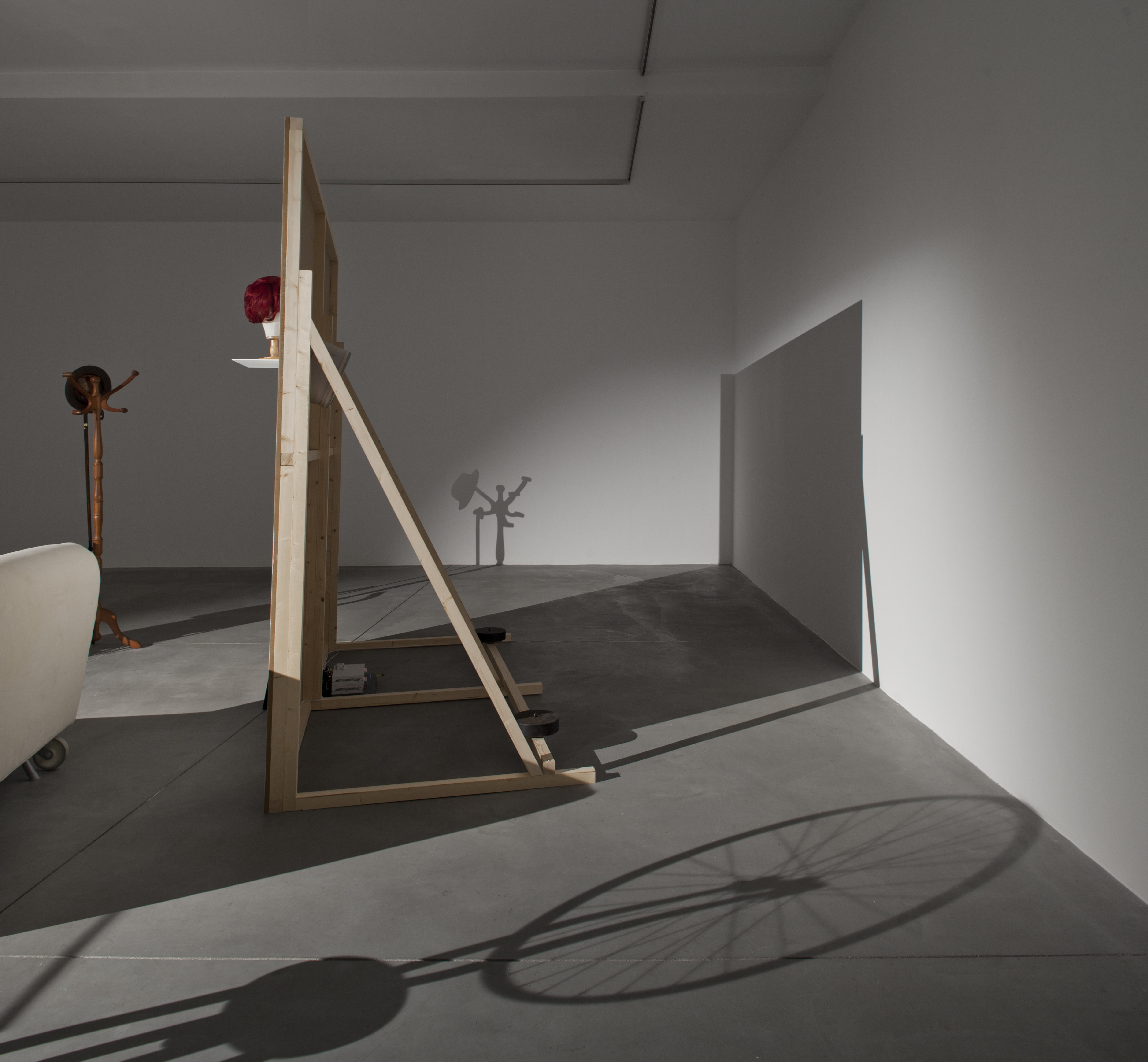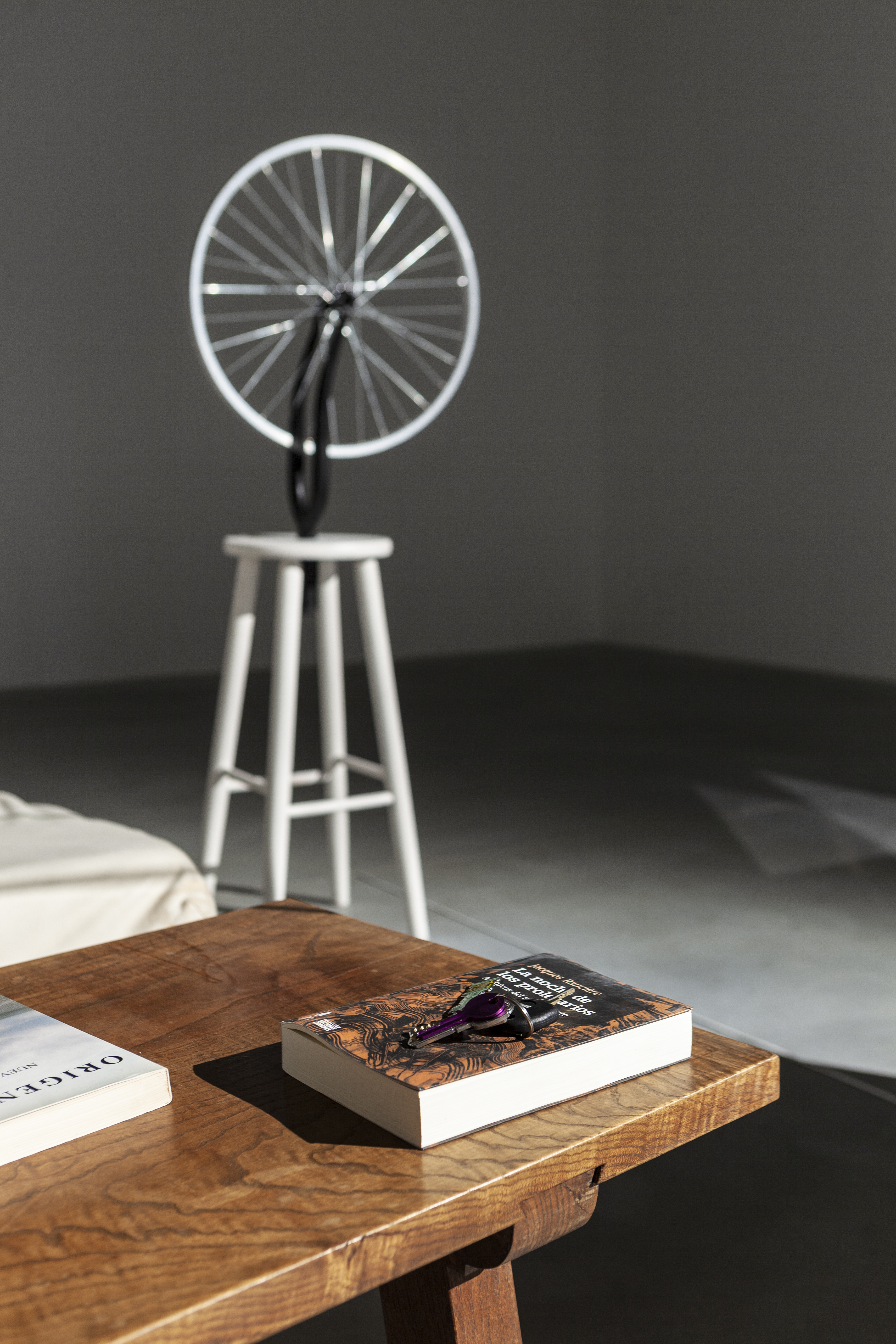The Best Job in the World
2021
Mixed-media installation, consisting of:
An audio piece (mp3) transmitted in three hidden speakers; 30’04”; a theatre spotlight; a baby cart; a funnel; a hat and a cane, inspired in Joseph Beuys, hanging from a coat rack; a custom made cushion with Vincen Van Gogh’s Self-Portrait with Bandaged Ear (1889) on a sofa bed; a table with a series of publications, such as the catalogue of the painting exhibition Origen y visión (nueva pintura alemana), held at Palacio de Velázquez at 1984 in Madrid, or an issue of the cultural magazine La Luna de Madrid; on top of a copy of Jacques Rancière’s Proletarian Nights there is a key chain, testimony of a round trip to New York; a fake fall; a custom made wig inspired the legendary Spanish gallerist Juana de Airzpuru, who founded ARCOMadrid art fair in 1982; a framed original poster of the first exhibition of Spanish artist Miquel Barceló al Leo Castelli gallery in New York in 1987; an unpublished photograph of the artist Esther Ibarrola entitled I Am th Sculpture (1992); a plinth with the work La chuleta (1991) from the artist Isidoro Varcárcel Medina and a replica of Marcel Duchamp’s readymade Rue de bicyclette by artist Suso Fandiño.
Dimensions variable.
Leer en español →
This work addresses the often-overlooked reality of artists who, despite
their talent and skills, face challenges that lead them to abandon
their artistic careers. Through a two-year research project, I compiled
oral testimonies from Spanish visual artists who interrupted their
artistic practice. The installation, resembling a theater stage without
actors, features edited audio testimonies and objects that reference art
history and everyday life, highlighting the myths and obstacles
affecting artistic careers in Spain and beyond.
[AUDIO] Single-channel version of the audio track in the installation. 28’07”.
[AUDIO] Single-channel version of the audio track in the installation. 28’07”.












More Info
This work addresses an issue that is often invisible when talking about art and artists. The testimonies that we get to know, through art history and the media, are those associated with a certain success: creators whose hard work and perseverance were rewarded in the form of recognition – whether in life or posthumous. The story of the struggling artist is seductive –and often seen as heroic–, but it also hides the reality of those who are forced to abandon that desire to meet more mundane needs, care for others or as a result of a disenchantment with an art system that is not always pleasant.
This reflection led me to undertake a two-year research approaching people based in Spain who were active as visual artists of different sports – performers, figurative painters, sculptors, conceptual artists, etc. – in the Spanish contemporary art circuits since the eighties and who, at one point, decided or were forced to interrupt their artistic production and/or stop participating in the public artistic life. The testimonies that I incorporated to this piece are those of Esther Ibarrola, Alberto Sánchez, Antonio Zúñiga, Joaquín Villa, Luisa Redondo, Miguel Lorente, Sergio Ojeda and Jaume Alcalde.
The installation emulates a theatre stage that serves to represent their story. I edited their voices in an audio piece that is broadcasted through speakers hidden in the room. The selected objects, coming from our conversations, refer to historical moments, characters, or iconic pieces in art history, in dialogue with everyday objects that allude to a series of myths and obstacles that often interfere in an artistic career.
This work addresses an issue that is often invisible when talking about art and artists. The testimonies that we get to know, through art history and the media, are those associated with a certain success: creators whose hard work and perseverance were rewarded in the form of recognition – whether in life or posthumous. The story of the struggling artist is seductive –and often seen as heroic–, but it also hides the reality of those who are forced to abandon that desire to meet more mundane needs, care for others or as a result of a disenchantment with an art system that is not always pleasant.
This reflection led me to undertake a two-year research approaching people based in Spain who were active as visual artists of different sports – performers, figurative painters, sculptors, conceptual artists, etc. – in the Spanish contemporary art circuits since the eighties and who, at one point, decided or were forced to interrupt their artistic production and/or stop participating in the public artistic life. The testimonies that I incorporated to this piece are those of Esther Ibarrola, Alberto Sánchez, Antonio Zúñiga, Joaquín Villa, Luisa Redondo, Miguel Lorente, Sergio Ojeda and Jaume Alcalde.
The installation emulates a theatre stage that serves to represent their story. I edited their voices in an audio piece that is broadcasted through speakers hidden in the room. The selected objects, coming from our conversations, refer to historical moments, characters, or iconic pieces in art history, in dialogue with everyday objects that allude to a series of myths and obstacles that often interfere in an artistic career.
Credits
General installation views and details of the exhibition The Best Job in the World [El mejor trabajo del mundo], Fundación DIDAC (Santiago de Compostela, 2021-2022).
Images: Roi Alonso.
Single-channel version of the audio track in the installation. 28’07”.
General installation views and details of the exhibition The Best Job in the World [El mejor trabajo del mundo], Fundación DIDAC (Santiago de Compostela, 2021-2022).
Images: Roi Alonso.
Single-channel version of the audio track in the installation. 28’07”.